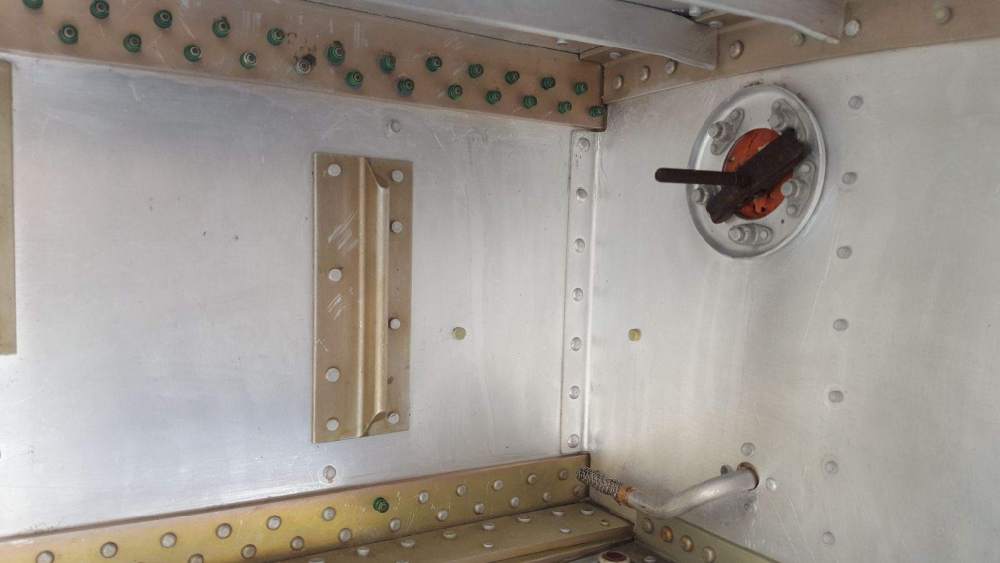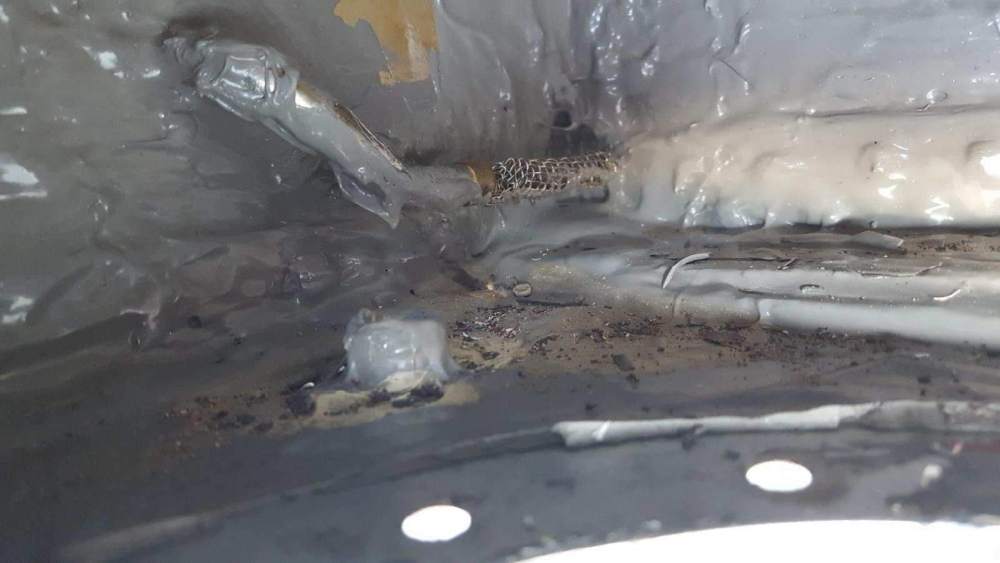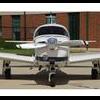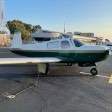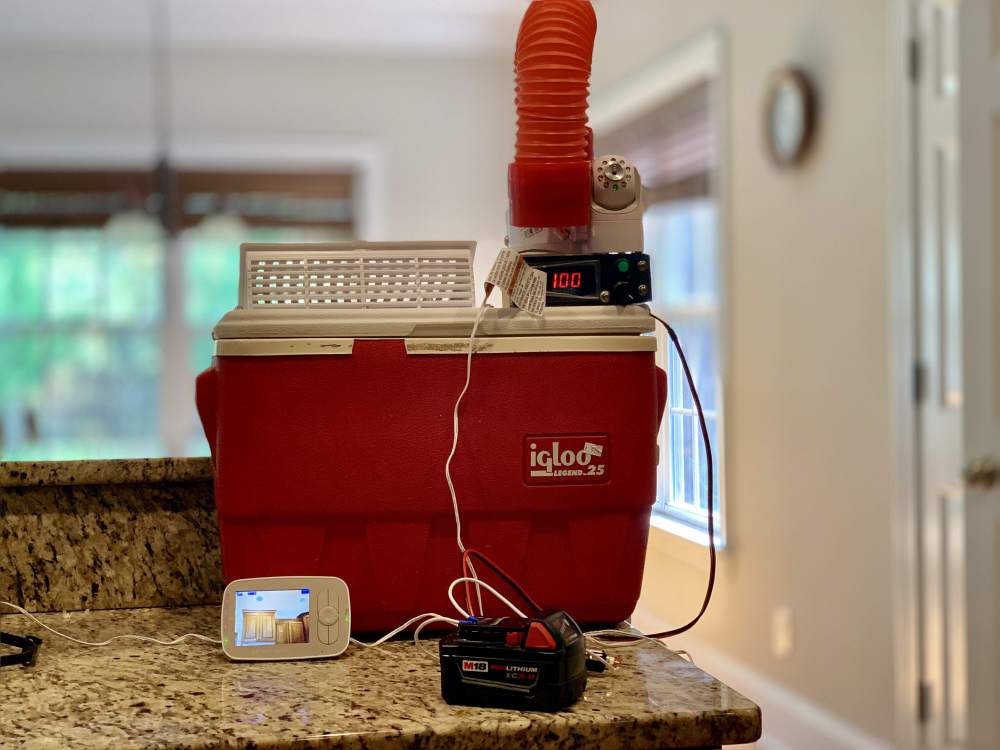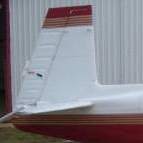Leaderboard
Popular Content
Showing content with the highest reputation on 06/16/2019 in all areas
-
I’ve been told many times how hard it is to close a door in flight. This morning as I was climbing out on my way to meet a fellow forum member I heard a slapping sound. The tail of the passenger side shoulder harness webbing was closed in the door and was slapping the side of the fuselage. I didn’t catch it predeparture because the orientation of the passenger seat blocked my view of the lower rear corner of the door. So I’m thinking to myself should I RTB or should I continue the 40 min flight with fabric slapping the fuselage. I decided to open the door and retrieve the seatbelt and RTB if I could not close the door. I reduced power and trimmed for 100MIAS. I opened the door, retrieved the belt and easily closed the door. No special maneuvers or cross control required. It was a non-event and it’s very likely that it could’ve been performed at a higher speed. Piece of cake. I can confidently say that closing a popped door on my mid body is as easy in the air as it is in the run up area pre departure.7 points
-
Update: looked at a Rocket and Bravo, now putting an offer on the Bravo. Best fit for our mission and has FIKI and redundant systems. MTF... Sent from my SM-N950U using Tapatalk4 points
-
Not sure if I'm seeing this right, but did you make your 360 to the inside of the pattern from the base leg? I would have thought making a 360 to the outside of the pattern would be safer? You've presumably just cleared your right side looking for traffic on extended final, whereas you've not had a reason to scan the downwind leg behind you? Also, just to contribute to the apparent thread migration further, I should point out that load factor in a constant rate climb or descent is still 1 G. It's an accelerated climb or descent that produces a change in load. If you're descending and your VSI is steady at -500 fpm, you're still at 1 G. If you're descending and your VSI is decreasing through -500 fpm, you're at less than 1 G. Simply descending while turning does not protect you against an accelerated stall. You only have the extra margin created by decreasing your wing loading while your nose is continuing to drop.3 points
-
2 points
-
If you catch it when you see the fuel pressure dropping it never even stumbles. If you don't notice and the engine quits once you switch tanks it comes right back up. One thing I learned, if you run a tank dry to the point of the engine stopping, that line is empty until you run off it again. I know that sounds like a simple thing to say. I ran the rh tank dry once, to the point of the engine stopping. Fueled up and started on the lh tank. Went r switch to the rh tank in flight and my fuel flow started dropping. I switched back to lh, thought about it for a few minutes and went back to the rh tank where all was good. Realized that it was because the line was still empty from before. Now if I run it all the way dry I will start on that tank so the line fills when I'm starting up. Edit: Having the carb actually helps because it gives you a few seconds of cushion to switch tanks when you notice the pressure dropping because there's still fuel in the bowl. It doesn't just drop, you will see the pressure just steadily falling. If you're paying attention your passengers will never even know.2 points
-
Vegas in the summer is a tricky one. There can be thunderstorms. There is often windshear. If something causes multiple arrivals to go around or hold, they all are up there burning fuel and need to get in.... It is often a fool's errand to go into LAS in the summer without a bunch of extra fuel, assuming you aren't going in first thing in the morning when things are calm. That is because the divert airports for an airliner are all somewhat far away.. PSP, LAX, ONT, PHX. If you have planned one of those as an alternate and want that option, the go/no-go fuel to divert cannot dip below that plus IFR reserve. IF he went below that, deciding on another approach to Vegas an it did not work out, guess what option is left? Nellis, and then you're on the news. A320 driver that goes into LAS from time to time... Edit to also add, for our planning purposes in our own adventures: The whole alternate 1-2-3 thing. You can head to Vegas and be very sad without a good alternate, but the weather and reports and forecasts do not require an alternate at all..... after all, you won't find low ceiling/viz in Vegas very often. Just more food for thought, no matter whether you're flying a Mooney or an airliner.2 points
-
I recently finished my transition training with Donald E Kaye and Mike Jesch. Two fantastic gentlemen and great instructors. I finally had a chance to shoot a quick video in my Mooney. This is one of my first solo trips since finishing my transition training into my 67 M20F. I love being able to safely fly my plane now. It is so rewarding to gain proficiency and confidence with these beautiful machines. This was a twilight approach into Van Nuys over the San Fernando Valley in the Los Angeles basin. You might notice that ATC uses the wrong call sign when apparently asking me to switch runways but all worked out great and they didn't admit their mistake and I didn't know of their request until I watched the video. There was also another Mooney on approach 10 miles out with a very similar call sign. The runway was clear and I learned something from the experience. Enjoy riding along with me in my 67 M20F. Mooney_Twilight_Flight_Into_Van_Nuys_Medium.mp42 points
-
I'm NY based with a 231. Right now I'm not even doing the G5 HSI replacement until 2020. Everyone seems to be backed up. But here's my shortlist: - I've heard good things about Lancaster Avionics and they're close enough in PA for me to monitor the work. http://www.lancasteravionics.com - Or you could just take the plane to Florida for Sarasota Avionics. http://sarasotaavionics.com NOTE: I haven't had any work done by any of these two - but have had quotes from Sarasota and 3rd party referrals to Lancaster. As an electronics engineer avionics is something I'm very uptight and picky about, so I've been doing my due diligence for a while and interested to hear what you conclude too. PS: With that kind of avionics in your future plane, you better start looking for hangar space. Possibly the most expensive/tricky part of aircraft ownership in this area :-)2 points
-
The longest leg I ever did in my C was 738.5 nautical miles. I landed with one tank completely dry and the other tank was... low. I was very comfortable with the flight... because... I had almost 400 hours in the plane with the Insight G2 showing fuel flow, gal remaining, time to empty, etc. And so I knew from many hours of experience, to less than half a gallon, how much fuel I had at all times. It was summer time and mostly VFR. There was one storm with a couple of big cells over Kansas, but easy to see and avoid. The route was MSN to FWS so flat fields and pastures the whole way. Landing options everywhere. The last hour of the flight was over the DFW metroplex with airports every couple of miles, clear VFR weather. In other words, very much unlike the coast of BC and Alaska. The C can do it, but I wouldn't do it in a "new to me" airplane, nor with a newly installed fuel flow instrument. I was at 12,000 or 12,500 the whole way burning between 6.5 and 7.5 gph.2 points
-
We just flew from SoCal to NC and one day did two 3 1/2 hour legs. I have decided that about a three hour leg is the sweet spot as far as when I want to get out and stretch, as well as be fresh for the approach and landing. If I had an auto-pilot I might feel differently. At 9,500' we were burning about 9.5 gph, 2,500 rpm and as much MP as it would give with the throttle backed off just far enough to change the MP. With 52 gallons on board (49 useable) that gives me right at four hours with my personal minimum of one hour reserve. My bigger concern would be flying a route with more options for putting down off airport. This is a flight I am planning to make in the next few years and I will probably follow the Alcan highway or 'the trench.' We lived there from 80-84' when my dad was flying HC-130's with the Air Rescue Squadron out of Elmendorf. He has lots of stories about going after downed planes, some with good endings and more with bad endings. Giving myself the best chance at a good ending to a bad situation will dictate the route I take when I finally get to make the trip. FYI, there's another guy that made that trip and documented it, worth reading if you haven't yet. http://redfeatherpilot.blogspot.com/2011/09/so-begins-northbound-odyssey.html?m=12 points
-
Mine too, no matter what the airplane. I've flow airplanes with 7 hours usable fuel but still plan my stops about three hours apart. My other planning minimum is to use the worst fuel burn in the chart. With a 1 hour reserve, I've found that it gives me plenty of options from unexpected headwinds to my own failure to lean properly.2 points
-
This is an interesting point. For an ideal Otto cycle engine, the ignition occurs at TDC and the mixture burns instantaneously at constant volume and then expands adiabatically (without loss or gain of heat) as the piston moves down on the power stroke transferring work to the crankshaft. In a real spark ignition (SI) engine, the mixture takes a finite time to burn and there is a rise in pressure to a peak and then a decline. The peak pressure position (PPP) measured in crankshaft angle (degrees after TDC) is determined by mixture strength, rpm and spark timing. There exists a PPP for each engine (based on engine geometry) that will produce the maximum brake torque (MBT). Operation at MBT produces the greatest efficiency. In automobiles, the spark timing is viable allowing PPP to achieve MBT over a range of operating conditions. Our engines have fixed timing, and the rpm is variable only over a limited range due to propeller efficiency. Thus, our primary control to affect PPP is mixture. LOP mixtures operate nearer the ideal PPP which is why LOP mixtures have the lowest brake-specific fuel consumption (BSFC). This all is just the physics behind why LOP is more efficient than ROP. For the pilot, it means that if you can get the same power (meaning true airspeed since that is what the power is converted to in cruise) running LOP as you can ROP, then LOP will be the more efficient choice. This is clearly apropos to turbocharged engines. For normally aspirated engines, if you can accept the airspeed generated by operating LOP at a particular altitude, then LOP is again your most efficient option. If you need to go faster and the throttle is already wide open, you will have to run ROP and accept the lower miles per gallon. BTW, the loss in efficiency from operating off MBT by 5 degrees or so is small, which is another way of saying the optimum operating point is broad. This is why Lycoming could change the timing from 25 deg BTDC to 20 deg BTDC without claiming a power loss -- the loss was absorbed in the tolerances permitted by certification. But the engine will produce slightly more power with the 25 deg timing. Chapter 2 of the attached document has some interesting description as well as measured engine data. Skip Maximum Brake Torque Timing.pdf2 points
-
I see this as a failure to employ and respect Murphy’s law. Some student pilot in a pattern - a guy on the radio who sounds like the should have hung up the spurs 29.5 years ago - someone in a non-standard aircraft like a gyrocopter - all these and many more are red flags for something that may increase my risk exposure. Remember anything that can be screwed up will be. Assume the other guy will f up, have your contingency plan ready to execute, and that will keep you safer. The other thing I see as a learning opportunity is to use the radio to not just announce position, but deconflict or raise awareness. It’s right there and if both aircraft have them they should use them to coordinate. “Mooney is 45 entry to right downwind 36 at KXYZ, I heard a warrior but negative visual contact” ”warrior 1FU turning downwind 36” ”Warrior negative contact..where are you? ” ”midfield downwind” ”OK making a left 360 to rejoin the pattern on a 45, will sequence behind”. That takes 5 seconds or radio time and can avoid a lot of grief2 points
-
I am looking to purchase an old M20j in the North East... Will upgrade avionics with G3X, GFC500, GNX375 and GNC255. Would be grateful for feedback on the best Garmin Avionic shops in the area (and I know... Need to be available too) Thanks1 point
-
My GFC 500 installation is complete and the KC 192 and all 3 other servos are available for sale (KS 177 Pitch Servo, KS178 Roll Servo, KS 179, Trim Servo). For those who are not planning to upgrade, this is a good opportunity to get these servos and a backup computer for a price not achievable from other avionics sources. I also have a number of lights for the KC 192 Computer. KC 192 Computer Part Number is: 065-0042-03 S/N 52484 $2,500 The KS 177 Pitch Servo Part Number is: 065-0050-04 S/N 1968 $1,200 The KS 178 Roll Servo Part Number is: 065-0051-02 S/N 4700 $1,200 The KS 179 Trim Servo Part Number is: 065-0052-14 S/N 3881 $1,2001 point
-
I am a flashlight junkie. I have no idea how many I have. Unfortunately, I am also a CB and have bought quite a few that looked nice, and originally worked nice. But after some period of time, a bunch of them refuse to turn on without giving them a sharp rap of some kind. I think my new policy is that if the batteries are good, and it doesn't come on, it goes in the trash. It seems that AA units are the most convenient. What kinds/brands have the group found to be most reliable over time.1 point
-
Hey everyone. I just made myself a set of custom fit sun shades and thought I'd make a post to help consolidate some of the other information on the topic I've found on this site. First, I have to thank gsxrpilot & Skates97 for their helpful posts. As far as materials you need the following: - Aluminum bubble insulation (available at most hardware stores, lumber yards, and amazon) - Aluminum tape (for banding the edges of the shades) - Blue painters tape - Scissors Process: 1. Unroll the insulation over the exterior of the window 2. Tape in place with painters tape 3. Cut out sun shade following window edge (re-tape as necessary while cutting) 4. Trim edges/fine tune shape once cut out from main sheet 5. Cut slit down middle of front windscreen and overlap or cut out extra material to accommodate compound window curve 6. Tape seams with aluminum tape 7. Fold aluminum tape over/around edges to add rigidity and prevent tears. I also made a step by step how to video: Thanks again everyone for making this project possible.1 point
-
I was scarred to death to reseal my fuel tanks because last time I did it on my old M20C corrosion was found in both tanks requiring a new wing for repair. My M20F is 4 years newer so I took the chance. Enclosed is a picture of some real shotty repairs over the last decades. No corrosion found. Guess the caked on sealant protected my tanks. I also enclosed one picture after cleaning out the old sealant. I will provide more pictures after Carl Sharon the Tankman out of Eagle lake finished up sealing it next week. If you need it done close to Texas Carl is your man.1 point
-
1 point
-
Just the US for filing, I have never done Canada except for just across the border stuff. Clarence or somebody else will be along to offer on that PWK works good for ORD (traffic will be bad in the PM) just be ready for getting one of the more bizarre runways and if you come off 16 start turning or you will blow the B. Chicago is unique in the sense you will almost never be put in the B, so plan accordingly.1 point
-
Both great airplanes. Great choice. I hope it works out well.1 point
-
Thanks for updating the post with your choice. It sounds like you made a careful, thoughtful choice, and I hope your purchase goes through w/o a hitch. -dan1 point
-
My C is good for 4:45 with an hour's fuel left over, but I'm well ready to get out and stand up. I generally travel 7500-10,000 msl, WOT-/2500. Don't think of distance, just time. I've had cruising speeds from 68-186 knots. So distance always depends on the wind. So be prepared to stop, and glad if you don't have to.1 point
-
1 point
-
I have flown the GFC 700 extensively. In some regards the GFC 500 is better. In my opinion the VNAV function is better in that with the GTN you can go VNAV Direct and bypass all other step downs. I'm not aware of that function on the GFC 700. Like the GFC 700, the GFC 500 holds altitude to within a foot in ALT mode. I'm still having a little issue with random oscillations in the pitch mode, though. It's not bad, and if not fixable, can be lived with. Vertical mode adjustments are much easier on the GFC 500 with the wheel. On the GFC 700 you have to constantly push the UP and Down button to adjust V/S and IAS climbs and descents. HDG changes on the GFC 700 are better in my opinion. The plane rolls into a turn and rolls out of it exactly on Heading. With the GFC 500 it rolls in at a 30° bank, the nose drops and before the pitch servo activates altitude is lost and some G force is felt as the elevator servo brings the nose back level. Also, the plane rolls out early and takes a few seconds to arrive at the correct heading level. I think it is a "Gain" issue, but is not changeable per the STC. Having said all of this, the GFC 500 is an amazing autopilot, so much better than the KFC 150. Since GPSS is built in, you can intercept courses with it in HDG mode unlike the KFC 150 which cannot in GPSS mode. Procedure turns and holding patterns are flown as smoothly as turns in a Commercial Airliner. It is also so much easier to see exactly what is going on with the various ARM modes including their color changes. In summary, I'm very glad I installed it.1 point
-
I thought that would be a problem considered getting some of these. https://www.classicmuscle.com/shoulder-harness-to-headliner-retainer-cover-set?utm_source=google_shopping&m=Abstract&gclid=CjwKCAjw0ZfoBRB4EiwASUMdYX2JhizH9d6Q_hzUrU7Ax9h6N7ZErnkRf5lMKuQMAn6GIY-M6cmbvRoCyOUQAvD_BwE1 point
-
These days I've been converting to mostly headlamps. They keep the hands free, and the varieties and costs and qualities available seem to be quite good. I have different kinds and styles for different applications, but they mostly come down to the same thing more or less like this: https://www.amazon.com/Ultra-Bright-CREE-LED-Headlamp/dp/B019MK6DX6/ I keep one in my toolbox, one in my flight bag, etc. The last ten years I've spent a fair amount of time in old mine tunnels and these get attached to my hard hat. The one shown has a dimmer control so that you can turn it way down in low light (which increases your ability to see stuff). Note also the Harbor Freight hand-held. Only the best.1 point
-
If you avg 135 knots, you're exactly 4 hrs, but 30 minutes of fuel for vfr alternate or 45 for IFR puts you at 4.5-4.75 hours of fuel. That doesn't leave a whole lot for headwinds or deviations. Personally, I'd stop along the way and refuel. I have no experience flying in the NW, but I've always felt the weather can change quickly.1 point
-
That will be a fine panel when you are done. Most good avionics shops are booked into 2020. Even the not-so-good ones are busy. Since your plane will be in the avionics shop for months (possibly 3 to 6) you could expand your search area by say 500 nmi, a reasonable flight in the M20J. That will greatly expand your list of shops.1 point
-
I have no idea if there is a verifiable reason, but someone told me years ago to store the batteries (or at least one of the set) backwards in the flashlight when not in use. I've been doing that for more than 20 years and have not seen a leak, and even the cheapest $1 LED flashlights and their batteries have been ready to go when needed.1 point
-
It is my understanding that the legality vs illegality of fuel reserves is measured at take-off. I have not seen anything about it being illegal to eat into your reserves, unless it fell into the "reckless" catchall category. Don't get me wrong; if you go into your reserves, you are not doing something right.1 point
-
I have a 64 mooney M20c and my personal minimums are 3.5 hours, then I land somewhere fuel up, plane, body, and rest for a short bit, gives me a chance to also look at the next leg with a different perspective, 3.5 will get you far, as for going straight from the US to Ketchikan, I have met a few Mooney drivers coming through my airport for last fuel up before crossing Canada. Personally for me, I would stop on the northern tip of Vancouver Island, before flying over the remainder of that busy wild between there and Ketchikan, not too many outs from that point on. Just my opinion, I would like to hear how your trip goes if you do not mind?1 point
-
1 point
-
What you heard was a bingo fuel call. It varies depending on where you're at. We try to land at 5K lbs (usually more), minfuel is 4k and emergency fuel is 3K. From the point where he was holding, to his track to touchdown to his alternate plus his reserve prompted the decision to bail to the alternate. Bingo fuel is there for a reason. It's like V1 on takeoff. It takes the decision out of the hands of the pilot. Yes, the PIC always has discretion, but why would you go against a tried-and-true method that is safe? Think of the alternate reality... He attempts the approach, something happens (windshear maybe) and ends up well below his fuel on a missed approach and now he's fuel critical at Phoenix with emergency fuel; rather than a comfortable 5K he's now down to 3K. It happens that fast. Each go around for us costs 1500 pounds of fuel. s*** gets real pretty fast when you arrive at a destination with 3K on the airplane! Sent from my Pixel 2 XL using Tapatalk1 point
-
1 point
-
Great clinic. First one and I have flown six Caravans already. They let me help qualify two pilots - one first timer and one coming back after a hiatus. Made my day!!! I had forgotten how getting close to another aircraft in flight (something the veteran Caravaners do all the time) would make a non-Caravan-trained pilot feel so uncomfortable. Total time for a pilot is not the issue. Mooney time is not the issue. It is breaking the paradigm to accept that we can actually do such a thing safely, consistently, and repeatedly. We scare those who have not done this before. But......watching non-trained pilots get the training, practice the skill, gain the confidence, and look forward to the execution - that is priceless. Bob "Breakdown" Belville @Bob_Belville did a great job organising it. Cue Queen - "And another one Bites the Dust..." Queen-Another-One-Bites-The-Dust.mp31 point
-
I think Peter’s point is that while bank angle can affect AOA, they are independent of one another. Given enough altitude one could theoretically do a slow 8 point roll and attain the same AOA at every point.1 point
-
This is not accurate. Stall speeds increase when bank angle increases at a higher rate than normal backstick pressure alone (all lift vector against weight+G). A pilot attempting to increase their turn rate by using elevator thus is increasing angle of attack quicker to a stalling AoA, hence “higher speed.” This effect doesn’t require level flight, just an angle of bank and an attempt to increase turn rate using elevator. Climbing, or descending... your stall “speed” increases with angle of bank (your wings stalling AoA, however, remains constant. ”holding level flight” is not a prerequisite for this condition.1 point
-
We have a small (maybe 12 can) Coleman soft side that we take drinks and snacks in the plane. Going to bring my bad boy with me this time. Will probably freeze water bottles and put some wet ice on top. It works well as a fan even with no ice as KP states above. I have the Rav power solar charger. I like it. It lives in the airplane now as part of my emergency pack These little camping lanterns are worth their weight in gold. I got a little power brick that will charge my iPhone 3-4x on a single charge. I have a tiny freebie one that I could carry with us during the day that would do a single charge but was more than sufficient. The mooney caravan had a generator last year. Nothing like carrying a 4 year old a quarter mile to the potty after midnight along the road. But it’s oshkosh and you can’t trade those memories for anything :-) Here’s a copy of our packing list from last year. This was for a 4 year old and her dad. Hammer for tent stakes Navdata Cash Tent Foldable stroller Camping chairs Tarp / footprint Picnic blanket (waterproof backing) Camping mattress x 2 Sleeping bag for Olivia and Brad Sun hat for Olivia and Brad Sunscreen Bug stuff Shower stuff - shower shoes (Olivia flip flops at dollar general) Toiletries / wipes / body cleaning wipes flashlights lantern Batteries AAA and AA Solar charger Rain jacket : umbrella Fleece / jacket Trash bag / laundry Ponchos Towels / washcloth Cooler beer hydration water drinks Gatorade powder whiskey whiskey for party Breakfast items / snacks /lunch for flights Toys books Airplane ground screws Large wrench for ground screws cutting boards for wheels First aid and survival equipment Life jackets1 point
-
I'm not sure but I think you really misunderstood my point in agreement with what you were saying about basic airmanship or perhaps I was mistaken as to which statement you were referring to1 point
-
I don't think Mr. G is implying aerobic wing overs in the pattern but that pilots need to understand how to fly their airplanes and that making a descending thirty to say 45 degree bank with the wing unloaded should not be foreign territory when flying the pattern. Personally I find power off base and final turns with a 30 bank to give very consistent results with a rate of descent between 300 and 400fpm. And if you don't get the result you expect then for shits sake go around. But it's all about planning knowing where you are relative to the runway and what the winds are doing. As for entering while others are in or approaching the pattern I always make sure I know what and where everyone is and if I'm not certain then I will stay clear until I am. Communication between pilots and making sure position reports make sense you have to assume folks might not know your local ground reference at your home field. Just my 1 cents worth.1 point
-
If so, time to find another maintainer that has your best interest in mind. Mike has done a great webinar on this very topic available. Google "Deciding when to overhaul" by Mike - available on the EAA videos site. Sent from my iPhone using Tapatalk1 point
-
Sorry, but... Assuming everyone else is going to fly to our interpretation of the FAR/AIM is naive. Entering the traffic pattern without a visual on other planes in the pattern is presumptuous. Descending into the pattern in a low wing is visually problematic. I would have apologized to the student for flying into his pattern without seeing him first. I like to approach the pattern at pattern altitude. It's just much less likely I'm hiding someone with my wing. And I'd never assume anyone else should be looking for me, will be where they say they are, or doing what I think they should be doing. This also comes from a lot of years on motorcycles. The safest way to ride is to assume I am invisible. Others on the road can't see you. If I ride that way, then it's 100% on me not to get hit.1 point
-
Hah - you are right! I did spell it correctly initially. Stupid auto spell on my iPhone sometimes makes ironic fun. So I will leave it rather than correct it1 point
-
Frankly before I started taking flying lessons, I'd only heard of the Mooney family was in reference to the cult they started in Korea that stages those mass weddings. Al's family had a diverse portfolio of innovation extending well beyond aviation1 point
-
This is what I know about calculus, and it comes from a sign in the window of a bar in Scotland: Alcohol and calculus don't mix, so don't drink and derive.1 point
-
This is your first post, and you have been around since 2012. What is your name? Don't hide behind an alias. I want to make sure we reevaluate the need to help you if that time comes. I have been very non judgemental until I read your post. You contribute nothing and bitch about your potential insurance rates. You sadden me on a very sad day, Sent from my Pixel 2 XL using Tapatalk1 point
-
1 point
-
Thanks for the very clever "cheat sheet". I have forwarded this on to our manual publisher/editor. Would you mind if we adopted your work in future publications? I have asked him to review the current PMA8000BT manual (there have been some changes since 2014) to find these incorrectly embedded buttons and place them in the correct paragraphs. If you have specifics, I know he would very much appreciate your help. Please feel free to call me anytime, I'm at 865-988-9800. While engineering is what we do best, we try really hard to put out quality documents but it's not as easy as one would think. Sincerely, Mark1 point








.thumb.png.7c67574d7b28f67b0b4a17760919b1ac.png)

